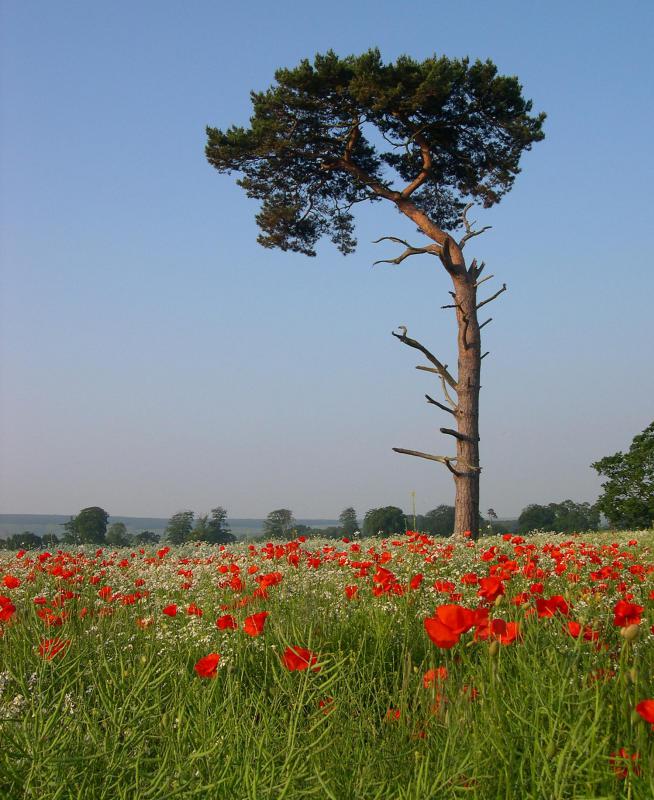At HomeQuestionsAnswered, we're committed to delivering accurate, trustworthy information. Our expert-authored content is rigorously fact-checked and sourced from credible authorities. Discover how we uphold the highest standards in providing you with reliable knowledge.
What is a Japanese Pine?
A Japanese Pine tree is any one of several varieties of pine native to Japan. Some species are also found growing in South Korea, Northern China, and Southeast Russia. The Black, Red, and White Japanese Pine trees are the three primary types of Japanese Pine, all of which are prized for their attractive evergreen foliage and shape. These trees are used primarily for ornamentation, and many are popular for the art of bonsai, or aesthetic miniaturization of trees in containers.
The Japanese Black Pine tree, sometimes known as simply "Black Pine," grows naturally around the coastal areas of Japan and South Korea. It is a popular horticultural tree because of its natural resistance to pollutants. In Japan, it is often used as a garden tree, and is one of the most commonly used trees for bonsai around the world, taking much care and many years to train properly.

A Japanese Black Pine can grow up to 40 meters (131 feet) in its native range, but rarely reaches this height outside its natural habitat. Its thick bark turns nearly black as it ages, beginning as a light gray color when the tree is young. The tree’s needles grow in pairs of two, with a white-colored sheath at the base of growth. In appearance, the tree has been described as elegant, interesting, strong, and stoic.

The Japanese Red Pine tree is found growing in Japan, China, Korea, and in extreme southeast Russia. It is a popular ornamental tree in Japanese gardens, and is also cultivated for its timber. There are numerous cultivars of the Japanese Red Pine, including the "Pendula," which is valued for its interestingly contorted shape.
In appearance, the Japanese Red Pine tree is similar to the Scots Pine, only without the bluish hue typical of a Scots Pine tree. It can grow up to 30 meters (98 feet) in height, and turns a yellowish-green color in the winter months. The needles are also produced in pairs of two, and can reach up to 12 centimeters (4.7 inches) in length.
The Japanese White Pine tree, perhaps the least known of the three, is also referred to as the Japanese Five Needle Pine. Unlike the other types of Japanese Pines, it is in the white pine subgenus, and is used as a horticultural tree in many countries around the world. The tree can grow up to 82 feet (25 m) tall, and typically reaches a width equal to its height, resulting in an attractive conical shape. It produces shorter needles than other types of Japanese Pine trees, reaching only 2 inches (5 cm) in length. This makes it an ideal candidate for bonsai.
AS FEATURED ON:
AS FEATURED ON:












Discussion Comments
What are the best tips for getting a Blue Angel Japanese white pine to grow in a Western climate? I live in the American southeast, and I would just love to transplant some of those things into my yard.
Is the climate at all suitable for growing the Blue Angel, and how would I go about doing it if it is? Are there any good tips for taking care of a Blue Angel Japanese white pine?
Besides being beautiful to look at, Japanese pines have a lot of health benefits too.
For instance, Japanese red pine needle oil has high levels of chlorophyll, a natural "feel good" chemical, as well as vitamin A, iron, and beta carotene.
Besides the anti-aging properties that it gets from the vitamin a and beta carotene, Japanese red pine needle oil also fights off fungi and bacteria in your body, somewhat like honey does.
Other researchers claim that red pine needle oil can lower blood pressure, improve thyroid function, and help prevent tumors from forming.
Although, as with any claim, you should take it with a grain of salt, there is actually a lot of scientific basis for believing in the benefits of Japanese red pine needle oil -- it's definitely worth a try.
When I was traveling in Japan, I went to a monastery where they had a gallery of cropped dwarf Japanese pines for bonsai trees.
It was so interesting to see the shapes that these pines had been cropped into because it looked so natural. If you had seen it growing as a full-sized black Japanese pine, then you would have no idea that it had been cropped.
It's very different than the topiaries and cropped trees of the Western world. I really loved the way it looked, so I ended up getting some dwarf Japanese white pine seeds to try it myself -- we'll see how it goes!
Post your comments